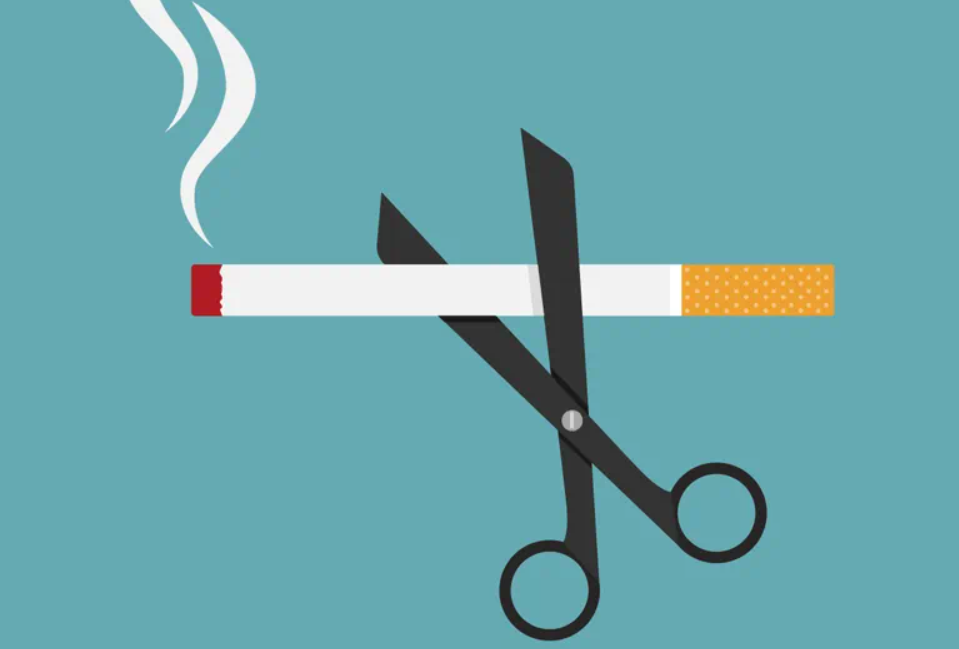How to Quit Smoking – 10 Easy Steps

Tobacco cravings or urges to smoke can be extremely powerful for the majority of tobacco users. You, on the other hand, are not at the mercy of your cravings.
When the desire to use tobacco strikes, remember that, regardless of whether you smoke a cigarette or take a dip of chewing tobacco, it will most likely pass within five to ten minutes. Every time you resist a tobacco craving, you get one step closer that how to quit smoking.
When you have a tobacco craving, here are ten ways to help you resist the urge to smoke or use tobacco.

How to Quit Smoking
1. Try nicotine replacement therapy
Consult your physician about nicotine replacement therapy. Among the options are:
- Nicotine on prescription in the form of a nasal spray or inhaler
- Nicotine patches, gum, and lozenges are available without a prescription.
- Non-nicotine stop-smoking medications on prescription, such as bupropion (Zyban) and varenicline (Chantix)
Nicotine gum, lozenges, nasal sprays, and inhalers are examples of short-acting nicotine replacement therapies that can help you overcome intense cravings. These short-acting therapies are generally safe when combined with long-acting nicotine patches or a non-nicotine medication.
Electronic cigarettes have recently received a lot of attention as an alternative to smoking traditional cigarettes. More research is needed, however, to determine the effectiveness of electronic cigarettes for smoking cessation and their long-term safety.
2. Avoid triggers
Tobacco cravings are most likely to be strongest in situations where you smoked or chewed tobacco the most, such as at parties or bars, or while stressed or sipping coffee. Identify your trigger situations and make a plan to avoid or get through them without using tobacco.
Don’t put yourself in a position to relapse. If you used to smoke while talking on the phone, for example, keep a pen and paper nearby to occupy yourself with doodling instead of smoking.
3. Delay
If you’re about to succumb to your tobacco craving, tell yourself that you must first wait 10 minutes — and then do something to distract yourself during that time. Try going to a public, no-smoking area. These simple tricks may be sufficient to quell your tobacco craving.
4. Chew on it
To combat a tobacco craving, give your mouth something to do. Chew sugarless gum or hard candy, or eat raw carrots, celery, nuts, or sunflower seeds — anything crunchy and satisfying.
5. Don’t have ‘just one’
To satisfy a tobacco craving, you may be tempted to smoke just one cigarette. But don’t kid yourself into thinking you can stop there. Having one usually leads to another, and you may end up using tobacco again.
6. Get physical
Physical activity can help distract you from and reduce the intensity of your tobacco cravings. Even short bursts of physical activity, such as running up and down the stairs a few times, can help to eliminate a tobacco craving. Take a walk or jog outside.
If you’re stuck at home or at work, try squats, deep knee bends, pushups, running in place, or walking up and down stairs. If physical activity is not your thing, try prayer, needlework, woodworking, or journaling. Doing chores, such as vacuuming or filing paperwork, can also serve as a distraction.
7. Practice relaxation techniques
Smoking could have been a way for you to cope with stress. Resisting a tobacco craving can be stressful in and of itself. Relaxation techniques, such as deep breathing exercises, muscle relaxation, yoga, visualization, massage, or listening to calming music, can help take the edge off stress.
8. Call for reinforcements
Contact a family member, friend, or member of a support group for assistance in resisting a tobacco craving. Call each other, go for a walk, share a few laughs, or get together to commiserate about your cravings. A free telephone quit line, 800-QUIT-NOW (800-784-8669), offers advice and support.
9. Go online for support
Participate in an online smoking cessation program. Alternatively, read a quitter’s blog and leave encouraging comments for someone else who is struggling with tobacco cravings. Learn how others have dealt with their tobacco cravings.
10. Remind yourself of the benefits
Write down or say aloud your reasons for quitting smoking and resisting tobacco cravings. These could include:
- I’m feeling better.
- Getting Fitter
- Preventing your loved ones from being exposed to secondhand smoke
- Spending less money

Why is quitting so hard?
We’re all aware of the dangers of smoking, but that doesn’t make it any easier to quit. Whether you’re a casual teen smoker or a pack-a-day smoker, quitting can be difficult.
Tobacco use is both a physical and psychological addiction. Cigarette nicotine provides a temporary (and addictive) high. When you stop getting your nicotine fix on a regular basis, your body goes through physical withdrawal symptoms and cravings. Because nicotine has a “feel good” effect on the brain, you may turn to cigarettes as a quick and dependable way to improve your mood, relieve stress, and relax. Smoking can also be used to cope with depression, anxiety, and boredom. Quitting entails finding new, healthier ways to deal with those feelings.
Smoking is ingrained as a daily ritual as well. Smoking a cigarette with your morning coffee, during a break at work or school, or on your way home at the end of a long day may be an automatic response for you. Maybe your friends, family, or coworkers smoke, and it’s become a part of how you interact with them.
To successfully quit smoking, you must address both the addiction and the associated habits and routines. But it is possible. Any smoker, with the right support and quit plan, can overcome their addiction—even if they’ve tried and failed before.
Summary
If you’re wondering how to quit smoking, learning more about the process can be beneficial. Understanding the challenges, developing a plan, using quit smoking aids, and dealing with withdrawal symptoms are all critical steps in the process. You can increase your chances of quitting successfully by using effective tools and having strong social support throughout the process.
See more useful article at my website y2kcenter.org




